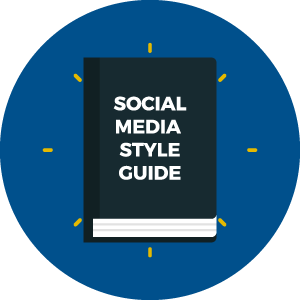
Social media for magazines should be equal parts branding and content marketing – with a new perspective on why magazines really market content on social

One of our clients recently conducted a 6-month test to increase their post reach, and one of the things we determined – after several months of testing every element available on Facebook – is that the number of clicks an article gets is the most influential factor for how much reach the article gets when it comes to social media for magazines.
For example, a post with 100 clicks and no likes would reach the same number of people as a post with 20 likes and just a few clicks (yes, people like, share and comment without clicking all the time!) Naturally, a double whammy is even better – the higher the reach, the more likes and shares a post would get, casting the net even wider. It showed us that all the effort that goes into getting people to like and comment might not be as important as the effort used to write engaging titles and descriptions that get people to click.
[text_ad]
 It seems Facebook has taken a page from Google, who determines which pages stay at the top of page one, partially by seeing how many clicks the page gets (minus any people who hit the back button once they arrive.)
It seems Facebook has taken a page from Google, who determines which pages stay at the top of page one, partially by seeing how many clicks the page gets (minus any people who hit the back button once they arrive.)
Sophaya CEO Mari Anne Snow said to me once, “likes and comments don’t convert to digital dollars.” There was probably a high five that came afterward because there are three reasons why mastering social media for magazines is so important, and it has very little to do with anything resembling a popularity contest in the struggle for likes and comments.
- Social media sends social signals to Google to tell them your content is popular and worthy of ranking when you get likes and shares.
- Social media increases the reach of your articles so more people will share content, thus increasing the signals sent to Google.
- Social media gives you a testing ground to test headlines, graphics, and other copy elements without changing the optimization of the article on your site.
As you can see, most of this comes back to SEO. We think it’s great if you can get a few hundred or thousand visits off a social media post – and if you convert visitors into email subscribers or buyers that day, even better. Loyalty, trust, and branding are all good reasons to participate actively in social media, and likes and comments are a good way to measure how engaging your content is.
But that’s not why we consider social media so important. A one hit wonder social media post is awesome. Bravo! But we put emphasis on spending the necessary time promoting your content in social media so that you get a few hundred, thousand, or tens of thousands of visitors every month through organic search. So when you see our somewhat aggressive approach to social media for magazines below, you’ll understand why.
Mastering social media for magazines step #1. Create a social media style guide.
 Before anything, pull down your editorial style guide and highlight anything that might apply to social. For example, don’t just look at, say, how you capitalize words, but also look at how you handle competitors. Some brands are happy to retweet and comment on the Tweets of their competitors, or share a recipe from an unknown blogger. And some simply are not OK with that one bit.
Before anything, pull down your editorial style guide and highlight anything that might apply to social. For example, don’t just look at, say, how you capitalize words, but also look at how you handle competitors. Some brands are happy to retweet and comment on the Tweets of their competitors, or share a recipe from an unknown blogger. And some simply are not OK with that one bit.
Mastering social media for magazines step #2. Pick a platform.
We think CoSchedule is the best tool for content marketing, and it’s the only one we know of that’s truly built into WordPress. It’s a WordPress plugin that allows you to schedule Tweets directly in WordPress, on the same page as the article itself. If you’re a Mequoda Gold Member, you either have, or will soon have Haven Social, which is powered by CoSchedule. Hootsuite is another option which works great for businesses because they offer reporting and it allows you to assign different tasks to team members.
Mastering social media for magazines step #3. Assign responsibilities.
 As you know, the age of the Internet has turned editors into marketers who are responsible for their content. This applies to social media, too. Unless you are a powerhouse publisher that can afford a room full of social media specialists, like the Chicago Tribune (@ColonelTribune is totally worth it, FYI), then your editors will most likely be running your social media. First of all, they know the content best, second of all, they’re already grammar savvy and probably won’t let out any typos.
As you know, the age of the Internet has turned editors into marketers who are responsible for their content. This applies to social media, too. Unless you are a powerhouse publisher that can afford a room full of social media specialists, like the Chicago Tribune (@ColonelTribune is totally worth it, FYI), then your editors will most likely be running your social media. First of all, they know the content best, second of all, they’re already grammar savvy and probably won’t let out any typos.
If you have an online marketing team though, they might have secure jobs in social media. For example, maybe your managing editor just writes the Tweets, and your marketing team is responsible for editing the Tweets, scheduling them, sending out promotional Tweets, and brand building beyond just content marketing. Or maybe your managing editor does it all. Anyway, use this step to determine who does what, and especially, who hits the “send” and “schedule” buttons.
Mastering social media for magazines step #4. Create social media formulas.
 We’re all about the 12x12x12 method. Write 12 unique Tweets for each article. Schedule them for 12 days. Then schedule them for 12 months. For an entire year, your article will be promoted and you only have to do it once. For Facebook and LinkedIn, write two unique posts. Schedule on the first day, then again in six months. Here are the 12 basic formulas:
We’re all about the 12x12x12 method. Write 12 unique Tweets for each article. Schedule them for 12 days. Then schedule them for 12 months. For an entire year, your article will be promoted and you only have to do it once. For Facebook and LinkedIn, write two unique posts. Schedule on the first day, then again in six months. Here are the 12 basic formulas:
- The title: Easy, just use the title
- The title & subhead: Or just the subhead, if it’s too long
- The excerpt: Interesting statement
- The summary: What they’ll learn by clicking the link
- The shout-out: @ anybody mentioned.
- The hashtag(s): Insert extra (related) trending hashtags
- The quote: Find a relevant quote and use it
- The quippy click-bait: Short and sweet
- The friendly suggestion: First-person request to read/share
- The question: Ask a related question
- The engagement: Ask them to comment/give feedback
- The takeaway(s): Subheads and major points
Mastering social media for magazines step #5. Create a series of non-promotional posts.
What else will you publish as part of your social strategy? For example, sometimes on on “Throwback Thursdays,” People posts vintage covers of their magazines. Martha Stewart sources ideas from their Facebook fans for future issues. Be creative and come up with a series of images you can share, that will provoke comments, likes, and more shares. These will be the keys to increasing your Facebook visibility.
Mastering social media for magazines step #6. Decide what to do with premium content.
 Does your content sit behind a paywall? That’s cool, you’re already used to forgoing search traffic anyway. But if you decide that you want to drip out tips with links back to some kind of access challenge page, just be clear on that strategy out of the gate. Harvard Business Review (@HarvardBiz) allows social users to read five articles for free, then they get hit a paywall. And it’s OK because they’re not getting it the first time.
Does your content sit behind a paywall? That’s cool, you’re already used to forgoing search traffic anyway. But if you decide that you want to drip out tips with links back to some kind of access challenge page, just be clear on that strategy out of the gate. Harvard Business Review (@HarvardBiz) allows social users to read five articles for free, then they get hit a paywall. And it’s OK because they’re not getting it the first time.
Mastering social media for magazines step #7. Integrate social media into your advertising packages.
Another use for social media is advertising. Publishers are beginning to include sets of social media posts, or co-sponsored posts as a part of their ad packages. If you decide to do this, remember that native ad guidelines still apply and you must add #ad or #sponsored to your post or make it abundantly obvious that the post was paid for. Here’s an an example from Wallpaper and here’s another example from SELF.
Mastering social media for magazines step #8. Create a social media calendar.
 Once all of the above is figured out, it’s time to create your social media calendar. This will be your structure and it will look a lot like your editorial and email calendars combined.
Once all of the above is figured out, it’s time to create your social media calendar. This will be your structure and it will look a lot like your editorial and email calendars combined.
- Editorial posts get posted on the same day they’re published (plus scheduled out into the future)
- Promotional posts get posted on the same day they’re emailed out to your email list
- Branded posts will get posts on the days you determine
- Ad posts will also get posted on the days you determine
Set your editorial and marketing teams up for success by creating this calendar. It will give them a checklist of sorts, so that they know exactly what’s going out and when. There are a lot of balls in the air at all times when it comes to social media, so structure will turn it into a more enjoyable process. One where your editors and marketers look forward to creating social posts that get clicked, rather than just trying to get social off their plate while they attend to other duties.


